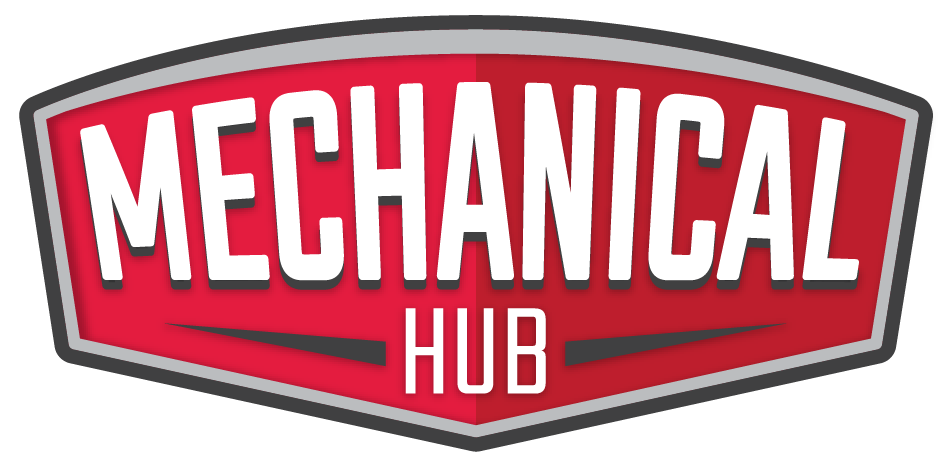Trade businesses are both numerous and unique, which presents some challenges when it comes to marketing and visibility in the industry. Still, there are some best-practice marketing solutions to create a visible and successful trade business in your local area with marketing. Key Takeaways: Trade Businesses Local businesses need to be listed in Google My Read more
Whats New

Trade businesses are both numerous and unique, which presents some challenges when it comes to marketing and visibility in the industry. Still, there are some best-practice marketing solutions to create a visible and successful trade business in your local area with marketing.
Key Takeaways: Trade Businesses
- Local businesses need to be listed in Google My Business to ensure local visibility
- It’s important to create high-quality content for your trade business that is unique
- Optimize the website with technical SEO strategies and make sure it’s mobile-ready
- Embrace social media as a marketing tool and a way to connect with customers
- Identify the marketing strategies that are most relevant and successful to the business
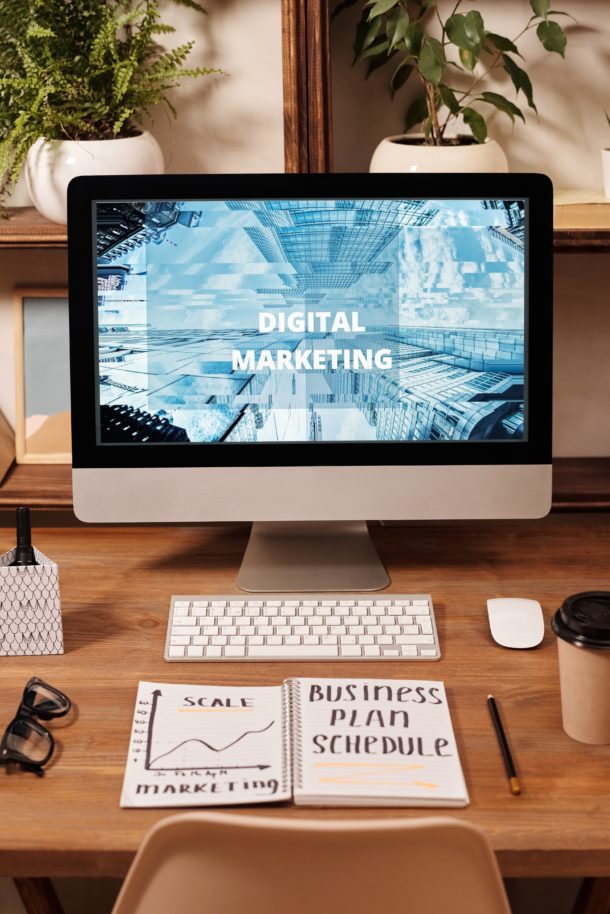
Local Listings
One of the first things to do for your trade business is sign-up for Google My Business – the best online directory for local businesses. Not only does Google My Business make your trade business easier to find, but it improves your SEO. A business that is not listed will rank lower on search results than one that is, regardless of the content and website optimization undertaken.
Signing up for Google My Business makes your local trade business more visible right away. When customers search for local services “near me,” the closest listening will appear along with business details like location, opening hours, and customer reviews. This is often the first thing people view when searching for local services; it is more accessible than ready search results.
High-Quality Content
Whether you are a plumber, painter, electrician, or builder, your industry is very niche. Every tradesperson in our industry has a website that contains the same content. Every plumber has an article about changing a tap, and every electrician has content on wiring a plug – this makes it difficult to compete for a better ranking on search results. But high-quality content can help.
High-quality content doesn’t mean excellent vocabulary and sentence structure; it means understanding your audience and creating content that speaks to them and is relevant. Find ways to add unique value to your customer’s experience, such as testimonials from previous customers or business anecdotes that only you can tell. This helps to set your content apart.
Optimize the Website
Once you have signed up for Google My Business, you are ready to improve the performance of your website. Search engines respond to user intent, technical SEO, mobile-first infrastructure, and Core Web Vitals that includes web page loading speeds. Make sure you have the best long-tail keywords on your website to match user search queries and outcompete your rivals.
Technical SEO is the process of optimizing the website for search engine crawlers; it involves embedding code in images and URLs to help the search engine crawlers find and rank the business. If you don’t know how to work with technical SEO, it’s best to hire an agency for the work. It’s also crucial to adapt your website to mobile since around 70% of people have one.
Social Media
At one time, social media was a nice-to-have feature in your life, but nowadays, it is more of a business necessity. Businesses of all sizes now use social media to engage and inform customers and generate interest in the business. Social media links up nicely with websites and content creation systems; best of all, it is free to open a business account on most platforms.
For the most part, social media is free. An account is free to open and simple to use. However, if you want more traction from your social media account, you will have to invest in paid advertising. Social media platforms such as Facebook and Instagram offer an advertising system similar to Google Ads, where you create an advertising budget to generate more leads.
Marketing Strategies
Marketing strategies are diverse and need to be suited to the unique requirement of the business. Trade businesses rely on local work, repeat business, and word-of-mouth. Still, trade businesses need an online presence in the form of a website, social media accounts, and e-mail marketing campaigns. Talk to a marketing professional about the needs of your trade business.
Chances are you will need a combination of marketing strategies to maintain visibility in your industry and drive traffic to your website. The more you invest in marketing strategies, the more growth you will enjoy, but you will strike a balance between the work you take on and your resources. In most cases, a trade business can benefit from content marketing and paid Ads.
Conclusion
Trade businesses operate in a competitive industry and require unique marketing strategies to make them visible and relevant in the local area. If you’re new to online marketing and want to take your trade business to the next level, build your online presence with SOAP Media today.

How to Ensure You’re on the Right Side of the Law Starting a business is a big undertaking, and it comes with many legal considerations. To ensure you’re on the right side of the law and protect your business, knowing what legal steps to take when setting up your business is essential. The fines for Read more
How to Ensure You’re on the Right Side of the Law
Starting a business is a big undertaking, and it comes with many legal considerations. To ensure you’re on the right side of the law and protect your business, knowing what legal steps to take when setting up your business is essential. The fines for overlooking legal business registration or permits can be massive and vary from state to state. The last thing you want is for your new venture to fail before it starts. So let’s look at what you must do before trading.
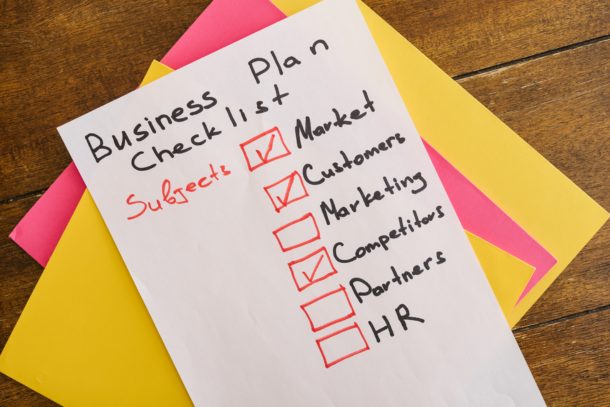
Choosing the Right Business Structure
When you’re starting a business, it’s essential to choose the proper business structure. This will determine how you’re taxed, your liability, and the paperwork you must do. The most common business structures are sole proprietorships, partnerships, limited liability companies (LLCs), and corporations.
A sole proprietorship is the simplest business structure, and it’s suitable for small businesses with one owner. The owner is personally liable for the business’s debts and liabilities, and the company is not separate from the owner for tax purposes.
A partnership is another relatively simple business structure, and it’s suitable for businesses with two or more owners. The partners are personally liable for the business’s debts and liabilities, and the company is not separate from the owners for tax purposes.
A limited liability company (LLC) is a business structure that combines the limited liability of a corporation with the pass-through taxation of a sole proprietorship or partnership. The owners of the LLC are not personally liable for the business’s debts and liabilities, and the business is treated as a separate entity for tax purposes.
A corporation is a business structure offering the greatest personal liability protection. The owners of a corporation are not personally liable for the business’s debts and liabilities, and the business is treated as a separate entity for tax purposes.
Registering Your Business with the State
Once you’ve chosen the proper business structure, the next step is to register your business with the state. This process is known as business formation, a legal requirement in most states.
The process of business formation varies from state to state. Generally, you’ll need to file the appropriate business formation documents with the state, and you may need to pay a filing fee. Depending on your chosen business structure, you may also need to register with other government agencies, such as the Department of Revenue or the Secretary of State.
Obtaining an Employer Identification Number (EIN)
After registering your business with the state, the next step is to obtain an employer identification number (EIN). An EIN is a unique number the Internal Revenue Service (IRS) assigns to a company for tax purposes.
You must complete Form SS-4, Application for Employer Identification Number, to obtain an EIN. This form is available on the IRS website and is free to complete. Once you’ve completed the form, you must submit it to the IRS. You can do this online, by mail, or by fax. Or use a Service for filing a federal tax ID with the IRS.
Establishing Business Licenses and Permits
In addition to registering your business with the state and obtaining an EIN, you must get the necessary business licenses and permits. This legal requirement in most states allows you to operate your business legally.
The requirements for obtaining business licenses and permits vary from state to state, so you must check with your state’s licensing authority for more information. Generally, you’ll need to apply for a business license or permit, pay applicable fees, and submit any necessary documentation.
Conclusion
Following this legal checklist will help ensure you’ve taken all the steps to be legally prepared to succeed. By preparing the necessary legal documents and registering your business with the state, you’ll be able to launch your business confidently, knowing that you’ve done everything you can to protect your business and ensure its success.
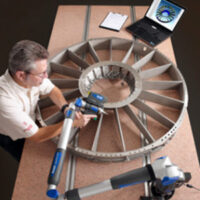
Can you imagine a world without 3D models? How would businesses create product designs without this powerful tool? 3D modeling is essential for companies that want to stay ahead of the competition. This blog post will explore how businesses can leverage 3D modeling for product designs. We’ll also discuss some of the benefits of using Read more
Can you imagine a world without 3D models? How would businesses create product designs without this powerful tool? 3D modeling is essential for companies that want to stay ahead of the competition. This blog post will explore how businesses can leverage 3D modeling for product designs. We’ll also discuss some of the benefits of using this technology. By the end of this blog post, you’ll better understand how 3D modeling can create unique products. So, let’s get started!
What is 3D modeling, and how can businesses use it for product design?
3D modeling is a process that creates a virtual representation of an object in three dimensions on a computer. This type of modeling is often used in the product design industry to create a tangible prototype before production. Through 3D Engineering, businesses can gain insight into their product designs while reducing expenses associated with trial and error. The process allows product designers to manipulate dimensions and simulate an array of potential configurations until they find the ideal version. Additionally, 3D modeling software can generate smooth surfaces, which reduces post-processing time and also makes it easier to identify potential problems with the prototype before resources are used to manufacture the final product. With its ability to visualize complex designs, quickly create intricate details, and reduce development costs, 3D modeling is becoming increasingly popular for product design purposes among businesses across industries.
The benefits of using 3D modeling in product design:
3D modeling has revolutionized product design, allowing businesses to create sharper visuals of more complex product designs quickly and with greater accuracy. With 3D modeling, companies have access to model-based visualization during all stages of the product design process. So, they can visualize and interact with their product as it develops, allowing teams to easily communicate objects digitally hassle-free, with less stress on resources due to faster turnaround time. Furthermore, the ability to modify designs in 3 dimensions results in higher accuracy and improved quality assurance measures which can drastically reduce production times and costs down the line. Ergo, 3D modeling contributes significantly to an efficient and optimized workflow for businesses looking to take advantage of new technologies for their product design processes.
How can 3D modeling help businesses save time and money?
Utilizing 3D modeling technologies in product design is an efficient and cost-effective way for businesses to save time and money. Companies can rapidly create accurate 3D models for product visualization, prototyping, and marketing by taking advantage of this powerful tool. This process speeds up product design cycles without sacrificing the quality of the end product. Furthermore, businesses can take their designs from prototype to market quickly and efficiently by using 3D modeling tools to capture customers’ attention and help them better understand how the product works. With these advancements in digital tools, businesses of all sizes can quickly produce innovative products that stand out above the competition.
The different software programs available for 3D modeling
With the latest technology and software solutions, businesses now have a myriad of options for creating 3D models to inform product design. These programs vary in complexity and can range from desktop applications to sophisticated cloud-based analytics platforms. With these solutions, businesses get abundant features such as realistic simulations, real-time design feedback, and the ability to create custom animations. Most 3D modeling programs also boast a variety of integration capabilities so businesses can easily incorporate images and files from other software. Finally, almost all programs offer file export options so users can share their work with business partners or send professional prototypes. Overall, 3D modeling is an incredibly effective tool for businesses looking to upgrade their product designs that can boast a wide range of software possibilities.
Tips on choosing the right software program for your business needs:
There are several considerations when choosing the right software program for your business needs. Price, functionality, compatibility, and support are just a few factors when selecting an appropriate 3D modeling program. Other noteworthy topics include user experience, rendering quality, and scalability. With so many choices out there, it is vital to ascertain your long-term goals for product development before deciding on a particular software system. Researching which program is most suitable for meeting those objectives will help ensure that you are making a sound decision in terms of cost and function.
How to get started with 3D modeling for product design:
The first step for businesses looking to leverage 3D modeling for product design is to get familiar with the technology. 3D modeling involves using specialized software to create mathematical models of objects and surfaces, allowing businesses to make realistic digital representations of their product designs. Once comfortable with the technology, companies can hire a professional 3D designer or create their own designs in-house; many tools are available to aid users new to 3D design. Furthermore, businesses should consider utilizing existing three-dimensional assets, which can significantly reduce design time and resources. Companies can quickly bring their new product ideas from concept to reality by taking advantage of these affordable, innovative technologies.
3D modeling is a powerful tool that can be used for product design purposes. Businesses can use 3D modeling to save time and money and create better products. Many software programs are available for 3D modeling, so choosing the right one for your business needs is essential. Once you have selected the right software program, you can use 3D modeling for product design.
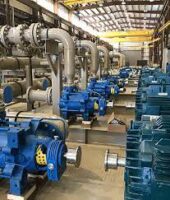
When you’re looking for a pump, there are a lot of things to care about. You want something that is going to be reliable, durable, and efficient. You want it to be easy to install and maintain. And you want something that’s affordable—but still high-quality. In this article, we’ll discuss how to buy frame mounted Read more
When you’re looking for a pump, there are a lot of things to care about. You want something that is going to be reliable, durable, and efficient. You want it to be easy to install and maintain. And you want something that’s affordable—but still high-quality.
In this article, we’ll discuss how to buy frame mounted centrifugal pump, tips for cleaning and troubleshooting issues to make sure your water pump performs effectively.
Why Care for Your Centrifugal Water Pump?
Caring for your centrifugal water pump is a crucial step in keeping it running smoothly. Doing this will ensure:
- Your pump lasts longer.
- It performs as expected and keeps your home or business running smoothly.
- You’ll save money on energy costs by using less electricity than if you don’t care for it.
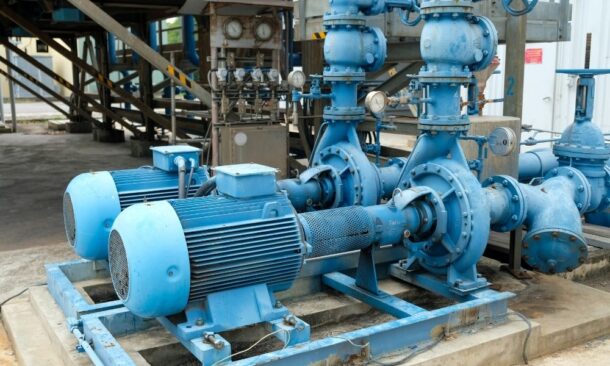
Tips for Cleaning and Maintenance
Taking care of a water pump is important to ensure its proper functioning and longevity. To clean a centrifugal water pump properly, you should follow these steps:
- Turn off the power to the pump and relieve the pressure from the system.
- Drain the fluid from the pump and surrounding pipes.
- Remove any debris, such as stones or other solid objects, from the pump housing and impeller.
- Clean the pump housing and impeller with a mild soap solution and a soft brush. Rinse thoroughly with water.
- Inspect the pump and its components for any damage or wear. Replace any damaged or worn parts as needed.
- Reassemble the pump and fill it with the proper fluid.
- Turn the power back on and start the pump to check for proper operation.
Troubleshooting Tips
- Check The Air Pressure
If your pump is running but not pumping, it’s probably because it’s not getting enough air. Make sure that the air compressor is working properly, and if you have to adjust it, do so in small increments until you find the perfect balance between too much and too little air pressure.
- Avoid Starvation of the Pump
If you notice that your pump isn’t working as well as it used to, it could be because of an issue with its shaft seal: if the shaft seal gets old or damaged, water will leak out of the pump instead of going into it! This means that your pump won’t be able to move water as it should—and this can lead to all kinds of problems down the road (like corrosion). So make sure to keep an eye on your shaft seal.
- Feel the temperature of all bearings
The last thing you should do before replacing or repairing anything on your pump is make sure it’s not overheating—and this includes its bearings! To do this, simply touch each one gently with a finger; if it feels warm but not hot to touch, then everything should be fine!
Signs Your Water Pump Needs Repair
A centrifugal water pump can show various signs that it needs repair. The following are some of the common signs that indicate your centrifugal water pump needs repair:
- Your Pump Won’t Start
If your water pump won’t turn on, there are a few things you can do to try and get it started. First, make sure that the power is set to ‘on’ in your house. If that doesn’t work, check the breaker or fuse box to make sure that it isn’t tripped or blown. If it is, flip the switch back on and wait for a few minutes before testing again. Finally, if all of this fails, call an electrician as soon as possible!
- Reduction in Fluid Flow
If you notice a significant decrease in the amount of water that is being pumped into your pool, the problem may be with your pump. This can happen when there is a blockage in the pump or if it has been damaged by debris.
- Leaking
There are several signs of leaking. If you notice any of the following, then it’s time to get your centrifugal water pump checked out:
- Water pooling on the ground beneath your pump
- Water coming out of one side of the pump when it’s running
- Water leaking from around where the pipe connects to the pump or where the pipe connects to another piece of equipment in your system
- Noisy Bearings and Cavitation
If you hear a humming noise coming from your centrifugal water pump, then this could mean that something isn’t running correctly inside there which means that it needs to be replaced before any further damage occurs. It’s possible that the bearings are causing the sound.
If this is the case, check your bearing oil for water and discoloration, as well as the temperature of all bearings. If you notice any of these signs, you may need to replace your bearings or have them checked by a professional.
- Inspect the Bearing Oil for Water and Discoloration
While checking for noisy bearings is important, another thing to look out for is cavitation—a phenomenon that occurs when air bubbles form in a liquid due to low pressure or turbulence at high speeds (like those used by centrifugal pumps). If you notice any signs of cavitation on your bearing oil’s surface, contact a professional immediately!
Conclusion
There you have it! A simple guide to caring for your centrifugal water pump.
It’s important to note that a centrifugal water pump is a complicated piece of machinery that can be damaged or destroyed if not properly cared for. But with some simple maintenance, you can make sure your pump keeps working great for years to come!
Remember to check your impeller regularly for cracks and wear, and replace it if necessary. Also keep an eye on the bearings and sealings, which should be lubricated regularly. If you smell burning rubber when you turn your pump on, or if there are signs of oil seepage from the bearings, then your bearings may be starting to fail—and that could mean trouble for your pump.
If you have any questions or concerns, please don’t hesitate to reach out!
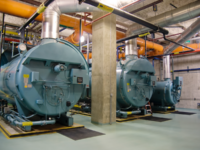
Fired equipment is an essential part of many industries, providing heat and energy to a range of operations and processes. From furnaces to boilers, and from kilns to ovens, these pieces of equipment are invaluable in many applications. With an ever-growing variety of fired equipment available, it can be difficult to keep up with all Read more
Fired equipment is an essential part of many industries, providing heat and energy to a range of operations and processes. From furnaces to boilers, and from kilns to ovens, these pieces of equipment are invaluable in many applications. With an ever-growing variety of fired equipment available, it can be difficult to keep up with all the different types and uses. Everything from transportation to manufacturing, food production, and more, can be aided by fired equipment. Whether looking for information on a specific piece of equipment or just curious about the options available, this guide provides a great starting point.
Furnace
The most common example of fired equipment is a furnace. A furnace is a device used to raise the temperature of a material. It heats a container that can hold the material and then transfers its heat via conduction and convection. The furnace is typically an insulated structure that contains a heat source, and may also contain a means of controlling the rate of heat production. Many industrial furnaces are also equipped with flow-control mechanisms and/or temperature sensors for continuous, automated operation. Furnaces can be used to produce many different products, such as silicon for solar panels, iron and steel for construction, and chemicals for drugs and other products. Many types of furnaces exist, each suited to a particular type or range of materials. A common example of an industrial furnace is the electric arc furnace, which is used for processing steel. In a residence, the term furnace may refer to any heating device, or to a central heating system that produces heat via a furnace or boiler.
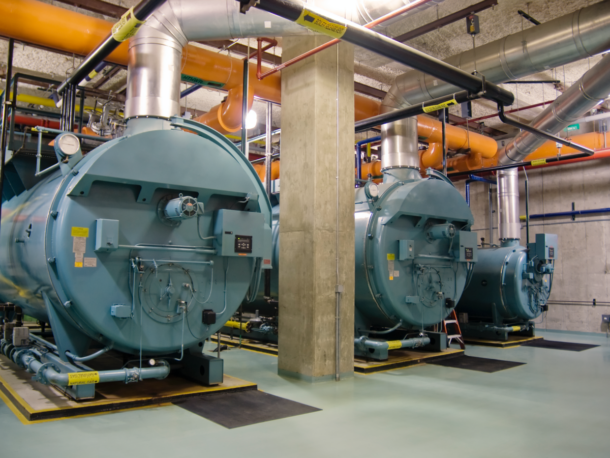
Boiler
A boiler is a closed vessel that uses water as a solvent to transfer heat energy to another system. The steam generated as a by-product can then be used to power turbines and can be used in many ways — as a source of thermal energy, as a source of power, and as a source of clean water. Traditionally, the boiler was used to generate steam to be used in a steam engine. Modern-day boilers are fired by natural gas, fuel oil, or coal, to produce pressurized steam. This steam can then be used to power turbines to generate electricity or to generate mechanical energy through a steam-powered actuator. Boilers are commonly found in central heating systems, industrial processes, and other applications that require high-temperature or high-pressure water. For example, the water used for semiconductor wafer processing, hydroelectric power generation, and nuclear power generation all must be extremely pure. In these applications, boilers produce steam that is then sent to a steam turbine to spin a set of turbines that pressurizes the water to be used as a solvent in other applications.
Kiln
A kiln is a device used for controlled heat treatment, generally used for industrial ceramics or pottery production. In ceramics, a kiln is often used to slowly increase the temperature of a piece of unfired ceramic ware to the point at which it reaches its volumetric transformation temperature. At this point, the ceramic piece is porous and thus finished. In pottery, a kiln is used for a wide variety of ceramics, including stoneware and earthenware. The firing temperature, time, and atmosphere of the kiln will control the color and other properties of the ceramic. In addition to ceramics, kilns are also used in other industries, such as cement production and metal sintering. For example, cement is produced by heating limestone, clay, and sand at very high temperatures to create a solid material.
Oven
An oven is a device that uses controlled heat to cook food. This includes both wood-fired ovens and brick ovens, which are commonly found in restaurants. While most ovens are used in commercial food production, they can also be used in the home. In a household environment, an oven may be used to bake, broil, roast, or even keep food warm. These ovens are often fueled by electricity, natural gas, or propane. Ovens are often insulated to keep the heat inside and operate for long periods of time. In addition to baked goods, ovens can be used to heat up food items quickly and conveniently.
Incinerator
An incinerator is a device that burns waste to reduce volume and eliminate contaminants. It can be designed to handle all types of waste, including municipal solid waste, hazardous waste, and medical waste. Incineration is among the oldest methods of municipal solid waste disposal. In modern times, incineration has become increasingly common as a method of managing wastes that cannot be reduced in volume by other methods, such as composting or municipal sewage sludge treatment. The incinerator can be used to produce electricity by burning a fuel source such as natural gas or biofuels. Energy production is often an additional feature of incinerators that are used in municipal waste disposal. The incinerator can be used to produce high temperatures, which are ideal for smelting and other processes.
Drying Oven
A drying oven is a device that is used to remove water from materials. A drying oven can be used to produce different goods, such as plant extract, sugar, or feedstock for the production of biofuels. Drying ovens are also used in many industries, like in the timber industry to dry timber with low humidity and in the baking industry to dry and cook products at high temperatures. A drying oven generally consists of an insulated furnace with a rotating roof and a rotating floor. Ovens are used in many industries and can be operated manually or with automatic controls. In the food industry, drying ovens are often used to dry fruits and vegetables, including dehydrating apples to make applesauce or carrots to make carrot powder.
Heat Exchanger
A heat exchanger is a device that transfers heat between a pair of fluids that are flowing through it. A common example of a heat exchanger is a radiator used to cool a car engine. In this example, cold water is run through the radiator, and the radiator transfers some of its heat to the water. The water is then run through the engine, where it is used to cool the engine. A heat exchanger can be made of a variety of materials, but it is often made of metal, such as copper or steel. A heat exchanger is often used in conjunction with a pump and a cooling tower to transfer heat between two fluids. Heat exchangers are used in many different industries, such as in chemical plants, oil and gas refineries, and food and beverage processing plants.
Calciner
A calciner is a device that is used to transform materials by heating the materials in a reducing atmosphere. This process is often used for the production of materials such as cement, lime, and phosphate fertilizers. Calcination can also be used for other applications, for example in the roasting of coffee beans. Calcining is a type of thermal processing that is used to change the composition of a material by increasing its temperature. This process can be achieved through a variety of methods, including the use of an electric arc furnace or a rotary kiln.
Pyrolysis Equipment
A pyrolysis process is a thermochemical decomposition of organic material in absence of oxygen. It produces a liquid, a gas, and solid organic material. This process is used to convert waste to fuel. Pyrolysis allows the process to be done in a controlled environment, which means that the waste does not need to be exposed to the air or the environment. Pyrolysis equipment consists of a reactor or a furnace that is heated to a high temperature to burn or decompose the waste material. The heat is used to break down the waste into synthetic crude oil, also known as pyrolysis oil, bio-oil, or bio-crude. This process can be applied to many different types of waste materials.
Conclusion
The term “fired equipment” encompasses a wide array of systems and appliances, all used in many different ways. Fired equipment is commonly used in production and manufacturing industries, but examples can also be found in most homes. With the help of this guide, you have now been introduced to 10 common examples of fired equipment as well as the characteristics and potential uses of each.
